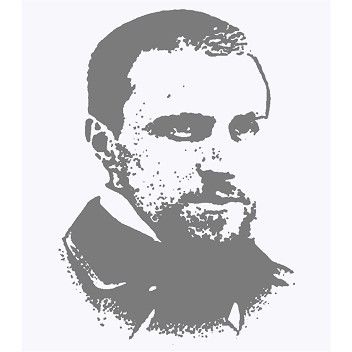Gustave Caillebotte
(French, 1848-1894)
Gustave Caillebotte was a French painter, member, and patron of the Impressionists, though he painted in a much more realistic manner than many other artists in the group. Wealthy and generous, Caillebotte financially supported his Impressionist friends by purchasing their works at inflated prices and underwriting many of the expenses incurred for the exhibitions. Caillebotte was a painter of great originality. Like the Impressionists, Caillebotte pursued an instant of vision, recording it with a fullness of truthful detail. Caillebotte, however, attempted to portray the rhythms of an industrial society with his regimented figures and the clock-like precision of his Paris. In this aspect, he was very much like the Realists.
After the war, Caillebotte began visiting the studio of painter Léon Bonnat, where he began to seriously study painting. He developed an accomplished style in a relatively short period of time and had his first studio in his parents' home. In 1873, Caillebotte entered into the École des Beaux-Arts, but apparently did not spend much time there. He inherited his father's fortune in 1874 and the three sons divided the family fortune after their mother's death in 1878. Around 1874, Gustave Caillebotte met and befriended several artists working outside the official French Academy, including Edgar Degas and Giuseppe de Nittis, and attended (but did not participate in) the first Impressionist exhibition of 1874.
Caillebotte used this fortune to enable himself to paint and to help out his fellow artists in the Impressionist group. Caillebotte's role within the Impressionist group was more than that of a simple fellow participant, and it was his financial support, rather than his critical success, which was most crucial to his colleagues.
Gustave Caillebotte is best known for his paintings of urban Paris, such as The Bridge 'De l'Europe', and Paris Street; Rainy Day. It's almost unique among his works for its particularly flat colours and photo-realistic effect which gives the painting its distinctive and modern look, almost akin to American Realists, such as Edward Hopper.
In 1875, wishing to make his public debut, Gustave Caillebotte submitted a painting to the Salon jury, which rejected it. That work was probably The Floorscrapers which Caillebotte then decided to exhibit in a more hospitable environment: that of the second Impressionist group exhibition of 1876. His work, highly acclaimed, stole the show and helped to make the second exhibition far more of a popular success than the first. Many of Gustave Caillebotte's urban paintings were quite controversial due to their exaggerated, plunging perspective.
Caillebotte acquired a property at Petit-Gennevilliers, on the banks of the Seine near Argenteuil, in 1881, and moved there permanently in 1888. He ceased showing his work at age 34 and devoted himself to gardening, building, and racing yachts, and spent much time with his brother Martial and his friend Pierre Renoir, who often came to stay at Petit-Gennevilliers, and engaged in far ranging discussions on art, politics, literature, and philosophy. Gustave Caillebotte drew up a will providing money for an Impressionist exhibition to be held after his death, and bequeathing his collection of Impressionist paintings to the State. Caillebotte died on February 21, 1894 of pulmonary congestion. Forty of his works now hang in the Musee d'Orsay.

